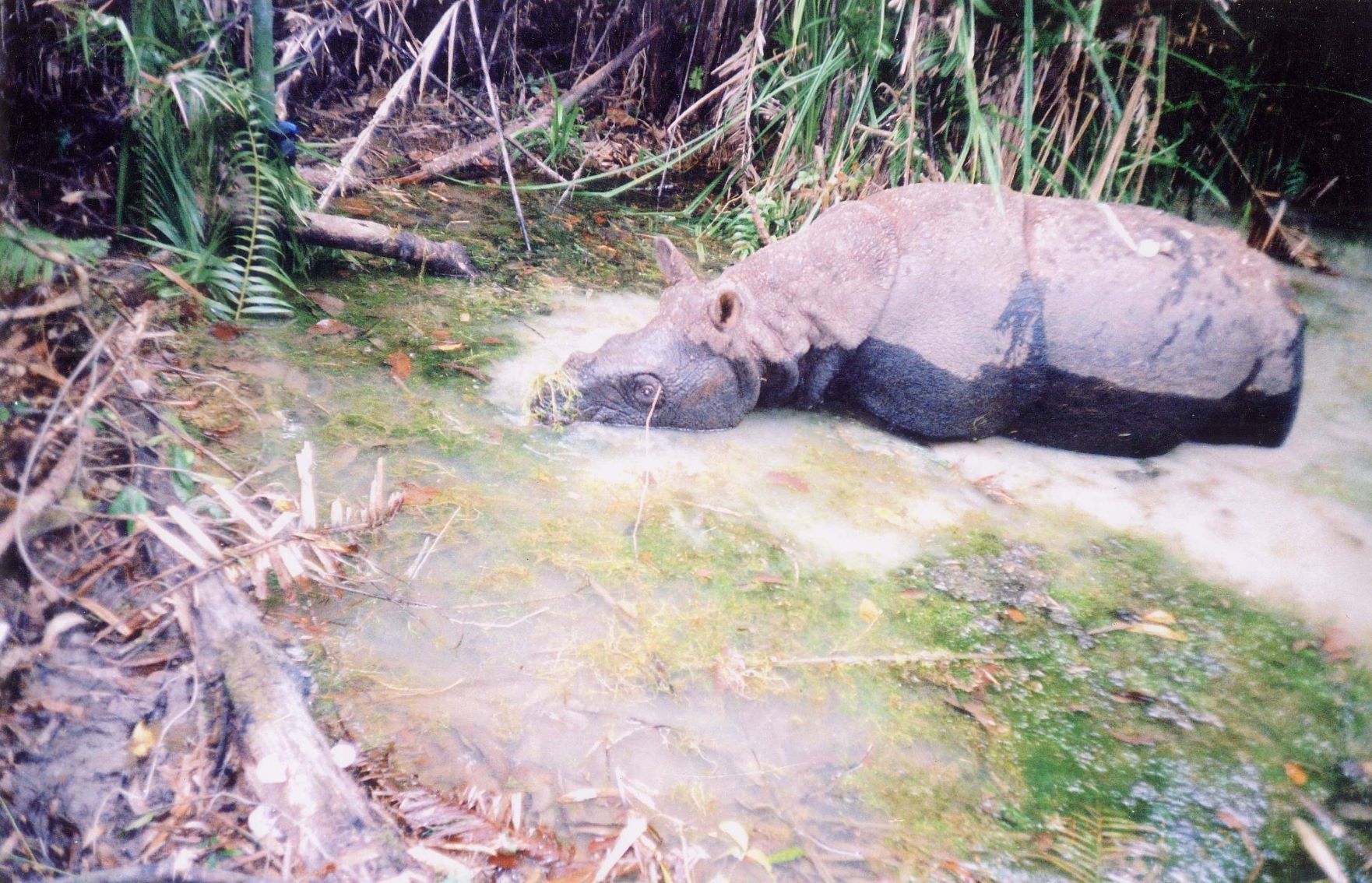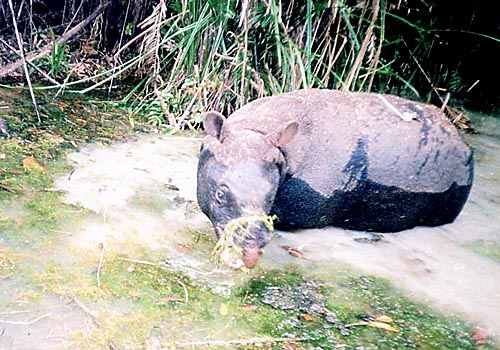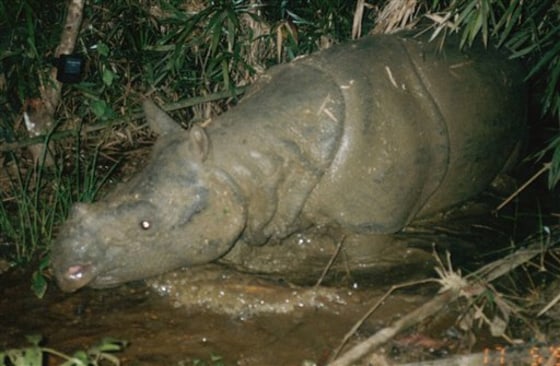Post by Melanie on Jul 16, 2009 7:18:26 GMT
Inside Cat Tien National Park, Vietnam, a rare subspecies of the critically endangered Javan Rhino still survives. Once thought to be extinct, it is estimated that there are only 3 - 5 of these delicate creatures left in the world. The Cat Tien rhinos have endured ruthless slaughter for their horns and annihilation of their habitat. Now there is yet another threat to their tenuous chances of continued survival.
Plans to build a power plant at the edge of the rhinos’ habitat have been approved by the Lam Dong administration. The plant’s dam will be slightly less than two miles from the Javan Rhino reserve. An estimated 1,000 tons of explosives will be used for clearing forested areas near the reserve. Construction is expected to take three years. And even clean energy - such as wind turbines - can have adverse affects on surrounding wildlife (and humans), if not properly sited.
» See also: African Rhinos Sold to the Highest Bidders - and Sentenced to Death
» Get EcoWorldly by RSS or sign up by email.
Blasting the forest with explosives, shaking the earth with heavy construction equipment- no matter what “benefits” the end result is purported to have - certainly raises questions about environmental responsibility.
And what about the fact that this activity will be taking place at the edge of a National Park that is home to 40 species on the IUCN Red List? According to wildlife experts expressing concern for the Javan Rhinos in Cat Tien at a conference in Dong Nai:
“The animals are so busy trying to avoid humans that they do not reproduce, something at which they are not good at to begin with.”
A “perfect storm” of habitat destruction
In addition to rampant poaching, this Vietnamese subspecies (Rhinoceros sondaicus annamiticus) of Javan Rhino has suffered some of the most extensive habitat loss of the five remaining rhino species. Any one of these factors could wipe out a species - yet this rhino has endured a “perfect storm” of large-scale environmental disasters:
Agent orange (a defoliator) during the Vietnam War. Half of southern Vietnam’s mangroves and 14 percent of its hardwood forests were destroyed; bamboo and grassland areas have still not grown back.
Human settlements encroaching on the park. Resettlement has not been done as planned, resulting in continued exploitation of the forest.
Expansion of commercial interests resulting in deforestation. The rhinos have been pushed into undesirable regions by illegal logging activities.
Poaching of endangered wildlife remains a threat in Cat Tien National Park
Unfortunately, the 40 species on the IUCN Red List in Cat Tien National Park are lucrative prey for poachers and locals who are hunting illegally. Inside the park, forestry protection services find thousands of traps each month - set by local people. Earlier this year, wardens discovered dozens of illegal wildlife shops in Lam Dong Province - which have apparently been operating unabated for many years.
Total Javan Rhino population: Less than 60
In addition to this Vietnamese subspecies of Javan Rhino, there is an Indonesian subspecies (Rhinoceros sondaicus sondaicus). Currently, the last 50 or so of the Indonesian subspecies are found in only one location - Ujung Kulon National Park, Indonesia. These rhinos are under constant guard by Rhino Protection Units. IRF says that translocation plans are in progress to establish a second population of Javan Rhinos to ensure their survival.
All five species of rhino are under current and constant threat of poaching for their horns, which fetches top dollar in the thriving illegal wildlife markets of China and other parts of Asia. Despite scientific evidence which points to the contrary, cultural beliefs surrounding medicinal properties of the horns persist - resulting in a 90% decrease in worldwide rhino population since 1970.
ecoworldly.com/2009/07/15/one-of-the-worlds-rarest-mammals-threatened-by-power-plant-last-population-of-javan-rhino-subspecies-struggling-against-extinction-in-vietnam/
Plans to build a power plant at the edge of the rhinos’ habitat have been approved by the Lam Dong administration. The plant’s dam will be slightly less than two miles from the Javan Rhino reserve. An estimated 1,000 tons of explosives will be used for clearing forested areas near the reserve. Construction is expected to take three years. And even clean energy - such as wind turbines - can have adverse affects on surrounding wildlife (and humans), if not properly sited.
» See also: African Rhinos Sold to the Highest Bidders - and Sentenced to Death
» Get EcoWorldly by RSS or sign up by email.
Blasting the forest with explosives, shaking the earth with heavy construction equipment- no matter what “benefits” the end result is purported to have - certainly raises questions about environmental responsibility.
And what about the fact that this activity will be taking place at the edge of a National Park that is home to 40 species on the IUCN Red List? According to wildlife experts expressing concern for the Javan Rhinos in Cat Tien at a conference in Dong Nai:
“The animals are so busy trying to avoid humans that they do not reproduce, something at which they are not good at to begin with.”
A “perfect storm” of habitat destruction
In addition to rampant poaching, this Vietnamese subspecies (Rhinoceros sondaicus annamiticus) of Javan Rhino has suffered some of the most extensive habitat loss of the five remaining rhino species. Any one of these factors could wipe out a species - yet this rhino has endured a “perfect storm” of large-scale environmental disasters:
Agent orange (a defoliator) during the Vietnam War. Half of southern Vietnam’s mangroves and 14 percent of its hardwood forests were destroyed; bamboo and grassland areas have still not grown back.
Human settlements encroaching on the park. Resettlement has not been done as planned, resulting in continued exploitation of the forest.
Expansion of commercial interests resulting in deforestation. The rhinos have been pushed into undesirable regions by illegal logging activities.
Poaching of endangered wildlife remains a threat in Cat Tien National Park
Unfortunately, the 40 species on the IUCN Red List in Cat Tien National Park are lucrative prey for poachers and locals who are hunting illegally. Inside the park, forestry protection services find thousands of traps each month - set by local people. Earlier this year, wardens discovered dozens of illegal wildlife shops in Lam Dong Province - which have apparently been operating unabated for many years.
Total Javan Rhino population: Less than 60
In addition to this Vietnamese subspecies of Javan Rhino, there is an Indonesian subspecies (Rhinoceros sondaicus sondaicus). Currently, the last 50 or so of the Indonesian subspecies are found in only one location - Ujung Kulon National Park, Indonesia. These rhinos are under constant guard by Rhino Protection Units. IRF says that translocation plans are in progress to establish a second population of Javan Rhinos to ensure their survival.
All five species of rhino are under current and constant threat of poaching for their horns, which fetches top dollar in the thriving illegal wildlife markets of China and other parts of Asia. Despite scientific evidence which points to the contrary, cultural beliefs surrounding medicinal properties of the horns persist - resulting in a 90% decrease in worldwide rhino population since 1970.
ecoworldly.com/2009/07/15/one-of-the-worlds-rarest-mammals-threatened-by-power-plant-last-population-of-javan-rhino-subspecies-struggling-against-extinction-in-vietnam/

















